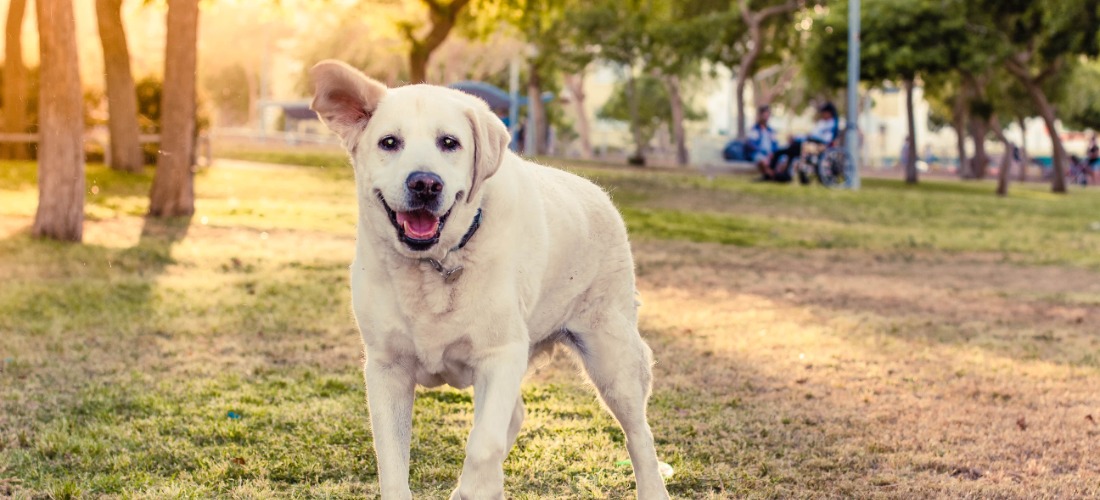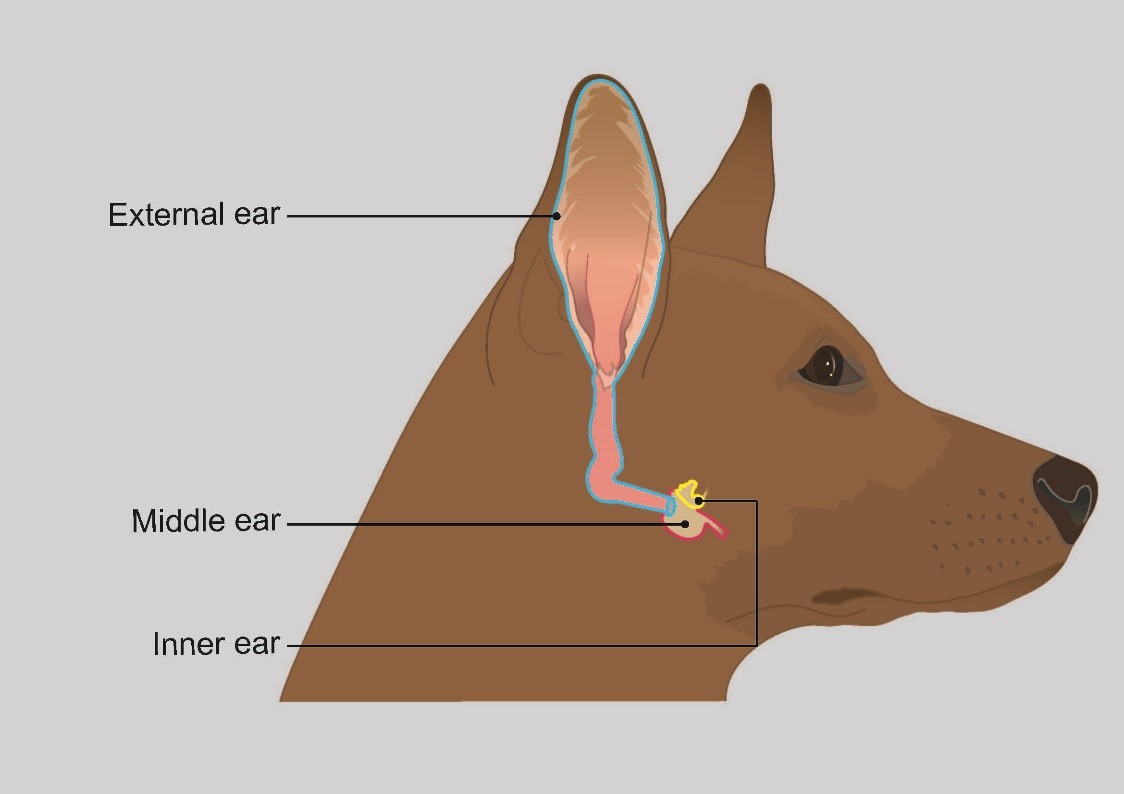Vestibular Disease in dogs
Overview
- Vestibular disease is a condition that makes a dog feel as though everything is spinning around them (just like vertigo in people). It usually causes loss of balance, a head tilt and flickering eye movements.
- Vestibular disease can be caused by anything that affects the balance centre in the inner ear and brain, and is most common in old dogs.
- Vestibular disease usually develops very suddenly, but fortunately, most dogs start improving within 2-3 days, and recover within a few weeks.
- Always contact your vet if your dog has symptoms of vestibular disease, and ask for a same-day appointment if they are vomiting or seem distressed.

Vestibular disease is a group of symptoms caused by a problem in the balance centre (which sits in the inner ear and brain). It usually occurs very suddenly and makes a dog feel as though everything is spinning. It can be very distressing to see a dog with vestibular disease and many owners mistake it for a stroke. Fortunately, with careful nursing, symptoms often improve within a couple of days.
Symptoms
- Loss of balance, leaning to one side, and falling over
- Head tilt
- Flickering eye movements (nystagmus)
- Vomiting
- Standing with their legs wide apart
- Walking in circles
- Collapsing/ struggling to stand
Causes
There are a few different things that can cause vestibular syndrome including:
Geriatric (old dog) vestibular disease - also known as idiopathic vestibular disease, affects older dogs, there is currently no known cause.
A middle or inner ear problem - such as infection, inflammation, a tumour or benign polyp.
A brain problem - such as infection, inflammation or a tumour.
Certain medicines - some medications are toxic to the ears and have the potential to cause vestibular syndrome.

Vestibular Disease in Dogs
Treatment
Treatment for vestibular disease depends on the cause.
Geriatric (old dog) vestibular disease
Old dogs that develop vestibular disease often improve over 2-3 days with nursing and anti-sickness medication (if necessary). Most can be looked after at home, but if your dog has severe symptoms, they might need to stay in the veterinary hospital for intensive care.
Ear infection
If your dog’s vestibular disease is caused by an ear infection, they are likely to need antibiotics, nursing care and other medication such as anti-sickness drugs. In some cases they may need a specialist surgery to drain their middle ear. Curing an inner ear infection can take several months.
What if they don’t improve?
If your dog doesn’t start improving within a few days, or your vet suspects something more serious is causing their symptoms, they may suggest further investigations. These could include an ear swab, x-rays, CT scan, MRI scan or a spinal tap (taking a sample of the fluid that sits around the brain and spine) and may need to be done at a referral centre (specialist vets). Once your dog has a diagnosis, your vet will be able to discuss their treatment options.
Home nursing a dog with vestibular disease
Keeping them safe
Keep your dog confined to a small area with soft furnishings and flooring so that they can’t walk into things, fall over or hurt themselves.
Food and drink
Make sure your dog eats and drinks regularly (you may need to hand-feed them for the first few days). Once they can eat on their own, make sure their food and water bowls are close to their bed.
Toileting
You may need to help your dog when they go out for a pee or poo. Either carry them, or support them whilst they walk (if you have a big dog this may take two people). You might find it useful to use a large towel, sling, or blanket under their tummy to support them and help them keep their balance.
Safe floors
Your dog will struggle to get up and move around so it’s a good idea to put them onto a carpeted floor where they won’t slip as easily. If this isn’t possible, consider getting a non-slip carpet or mat to put down (without raised edges).
Recovery time and outlook
Geriatric vestibular disease
Most dogs with geriatric/idiopathic vestibular disease, improve significantly within a couple of days and make a full recovery within 1-2 weeks. A head tilt will remain in some cases, but many dogs adapt and cope well with this. It’s possible for your dog to have more than one episode of idiopathic vestibular disease in their life time.
Other causes
The outlook for other causes of vestibular disease varies; ear infections, ear polyps and medication reactions are often treatable, but sadly, there are some conditions such as tumours and severe infections that don’t respond to treatment. If your dog is struggling with severe symptoms of vestibular disease and isn’t likely to recover, you may need to consider putting them to sleep to prevent them from suffering.
Cost
If your dog recovers well from vestibular disease, their treatment is likely to be relatively inexpensive. However, it can be an expensive condition to treat if it requires longer term treatment or referral to a specialist vet. Consider insuring your dog as soon as you get them, before any signs of illness start. This will ensure you have all the support you need to care for them. It’s also very important to speak openly to your vet about your finances, the cost of treatment, as well as what you think is right for your dog. There are often several treatment options so if one doesn’t work for you and your pet then the vet may be able to offer another.
Published: January 2021
Did you find this page useful?
Tell us more
Please note, our vets and nurses are unable to respond to questions via this form. If you are concerned about your pet’s health, please contact your vet directly.
Thank you for your feedback
Want to hear more about PDSA and get pet care tips from our vet experts?
Sign up to our e-newsletter
Written by vets and vet nurses. This advice is for UK pets only. Illustrations by Samantha Elmhurst.

